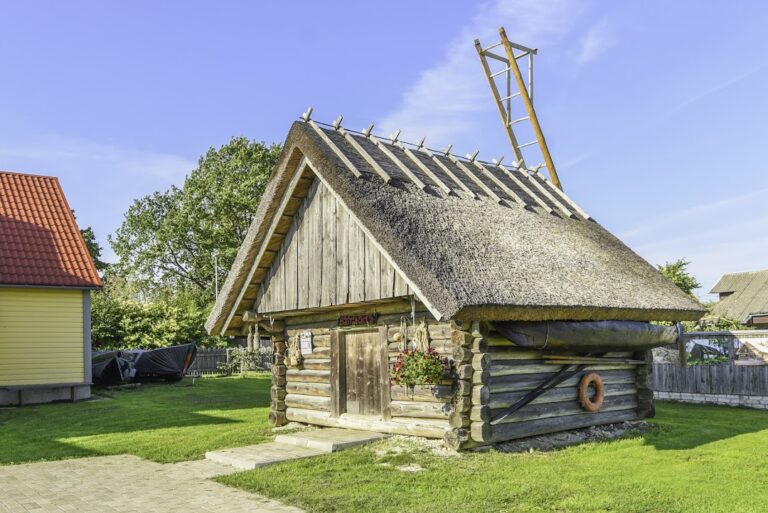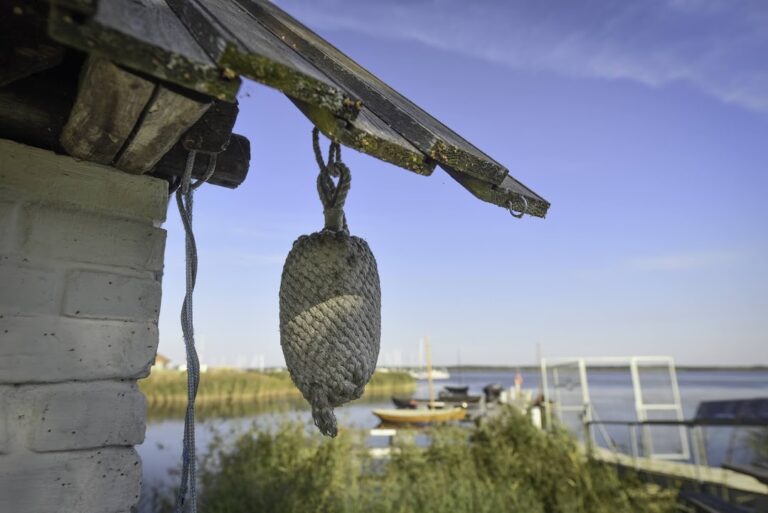Museum of the Coastal Swedes
Museum of the Coastal Swedes
The old Väeden tavern in Vana-Sadama, where the people of Vormsi and Noarootsi once waited to take the mail boat home, now houses the Museum of the Coastal Swedes introducing the history and life of the Estonian Swedes.
When the Soviet Union began to disintegrate at the end of the 1980s, people started to talk again about the Estonian Swedes who had lived on the west and north-west coasts of Estonia and on the island before World War II, most of them leaving for Sweden in 1943-1944. In 1988, descendants of the Estonian Swedes who had stayed in Estonia and those interested in the culture and history of the Estonian Swedes founded the Estonian-Swedish Cultural Society in Haapsalu. One of the aims of the Society was to set up a museum devoted to the life and history of the Estonia-Swedes.
The Museum of the Coastal Swedes was registered as early as 28 December 1992, but it took a few more years before the museum was actually opened. A suitable location for the museum was found in Vanasadam, an area already familiar to the Estonian Swedes. The first exhibition in the museum opened in June 1998 with a spectacular staging of a Vormsi-style wedding. It took another four years to officially open the museum in 2002, when King Carl XVI Gustaf and Queen Sylvia of Sweden also visited to celebrate the occasion.
The most impressive exhibit in the museum is the 20-metre-long hand-embroidered tapestry Rannavaip, which was completed in 2002 and gives an overview of the history and regions of the Estonian Swedes. In 2021, the successor to the tapestry was completed. As the Estonian Swedes found themselves living on two shores of the Baltic Sea after World War II, the five-metre follow-up tapestry is also embroidered in two parts – one depicting the fate of the Estonian Swedes who remained in Estonia while the other shows their life in Sweden. Every Thursday, the Thursday Nans meet up in the exhibition building. These are craftswomen with Estonian-Swedish ancestry who also take part in other museum activities.
The courtyard of the exhibition house features a small log cabin with a thatched roof named Bastabacka. This is a typical shed or spikar used by Estonian Swedes for storing various products. The shed was brought to the museum from the farm of the forest warden of Riguldi manor, outside the village of Höbring. The farm was known as Bastaback or Sauna Hill (in Estonian: Saunamäe). The net shed now features a maritime exhibition.
Next to the Bastabacka, however, is a unique multi-chambered fish smoking kiln, which was brought to the museum from quite close by – from Sadama Street. The kiln was used by the Mensas family, Estonian-Swedish fishermen and fishmongers from Noarootsi. The kiln was built during the interwar period (1918-1939) and has also been in use after World War II. The smoking kiln is also in active use at the museum, which organises events dedicated to smoked fish several times a year, where visitors can enjoy fish smoked in the museum’s very own kiln, alongside other goodies.
Over time, the museum has expanded. In addition to the exhibition building, named Heyman House in honour of generous donors, the museum also includes an annexe, which houses the museum’s offices, research library and meeting room. The office building was donated to the museum by Einar Hamberg from Riguldi. The building was named Hamberg House in his honour.
The museum complex also includes the barn or Gårdshuset, which displays some of the larger items and household accessories from the museum’s collection. The Gårdshuset was opened in 2019.
The museum also has its own pier with a number of Estonian Swedish vessels from Noarootsi punts to the motorboat Alexander, built on the Pakri islands.

Rannavaip tapestry – 20 metres of embroidered history
The most impressive and unique exhibit at the Estonian Swedes Museum is the tapestry showcasing the history and historical regions of the Estonian Swedes.
The idea to embroider a tapestry came to the museum’s then director Alar Schönberg when he saw the 40-metre Pilgrim Tapestry at the Utmarksmuseum in Ransby, Sweden, depicting a mediaeval pilgrimage, which was embroidered to mark the 1000th anniversary of Trondheim in 1997. The Pilgrim Tapestry is in turn inspired by the famous Bayeux Tapestry, which depicts the Norman conquest of England by William the Conqueror, or as he was later known, King William I of England.
Schönberg, who had returned from Sweden, thought that the history of the Estonian Swedes in Estonia could be recorded in the same way, embroidered onto a tapestry. The tapestry was designed by Jorma Friberg, a researcher at the Museum of the Coastal Swedes, who also drew the pictures for the embroidery. The embroiderers were mainly the Thursday Nans, i.e. craftswomen of Estonian-Swedish ancestry who meet up in the museum every Thursday.
Embroidery began in November 2001 and the tapestry was completed in May 2002, when the museum hosted the King and Queen of Sweden. Initially, the Thursday Nans embroidered the tapestry during their weekly meetups, but as the deadline approached, they came to the museum almost every day. In addition to the Thursday Nans, museum staff, including men, also picked up the needle.
The story of the Estonian Swedes begins with the boats that brought them to the Estonian coast and islands, and continues with the image of Haapsalu Castle and the year 1294, when the town privileges of Haapsalu were issued, marking the first time a Swedish settlement is mentioned in Estonia. The tapestry is embroidered with the Saint George’s Night Uprising, after which Padise monastery sold the Pakri islands to Swedish peasants. The tapestry captures the different powers, wars, epidemics and the constant struggle for the rights of Estonian Swedes. The tapestry portrays the deportation of Swedes from Hiiumaa to Ukraine and the burning of talharpas on Vormsi as a result of the activities of Swedish missionary Lars Österblom who was active in Vormsi. On the other hand, it also records the process of building up their own Swedish-language education and culture, from the founding of the Svenska Odlingens Vänner (Friends of Swedish Education) and the publication of their own magazine Kustbon to the establishment of the agricultural and folk university in Pürksi before World War II. All the main settlements of the Estonian Swedes can also be found on the tapestry. It ends with the departure of the Estonian Swedes from Estonia during World War II.
In 2018, the Estonian Swedes started embroidering a 5-metre-long sequel to the original tapestry at the suggestion of Ülo Kalm, the director of the Estonia-Swedes Museum. Unlike the original tapestry, the sequel was embroidered in parallel in Estonia and Sweden. Hence, the two-part sequel depicts the parallel lives of the Estonian Swedes on either side of the Iron Curtain. As in the case of the first tapestry, the embroidered motifs were drawn and designed by Jorma Frieberg, a researcher at the Museum of the Coastal Swedes. In Estonia, the tapestry was embroidered by the Thursday Nans of the Museum of the Coastal Swedes, while in Sweden, seven Estonian Swedes came to the Estonian House in Stockholm to do the embroidering.
Both sides of the follow-up tapestry begin with a real-life escape scene – while the escape on the Swedish side of the tapestry was successful despite the difficulties encountered on the way, the escapees on the Estonian side were caught by a German patrol and sent to Patarei prison. Side embroidered in Estonia
